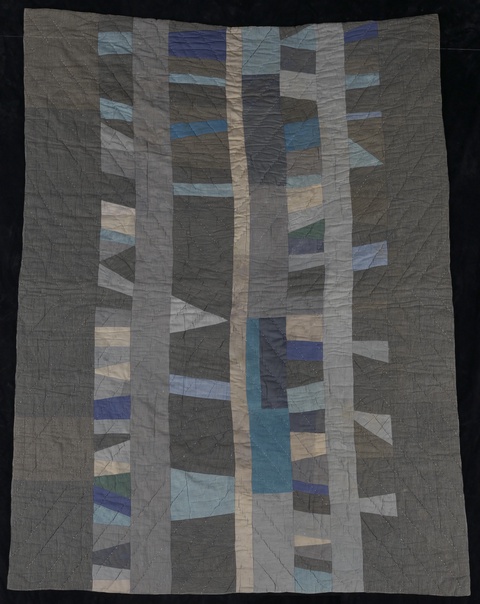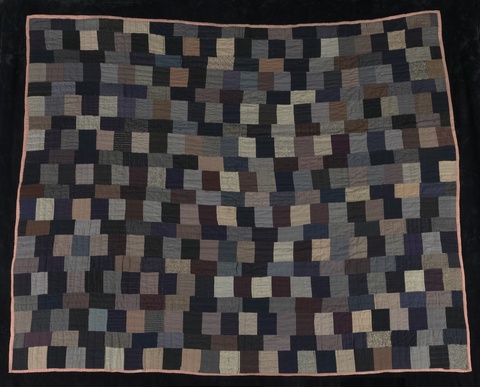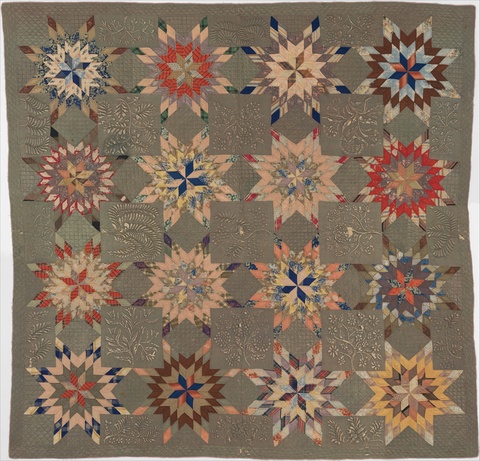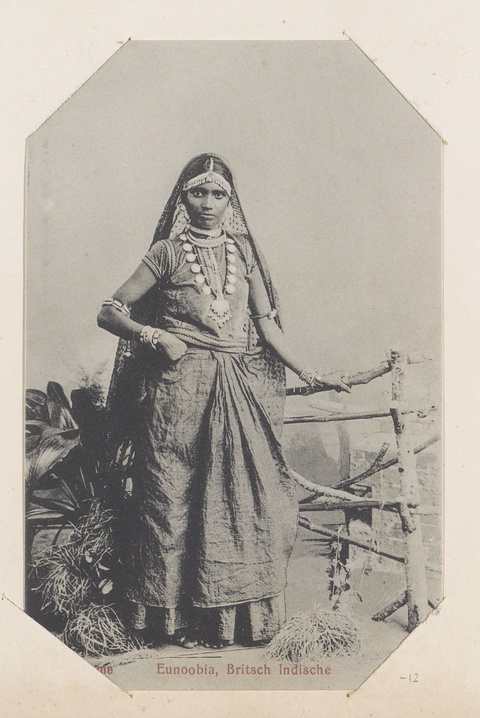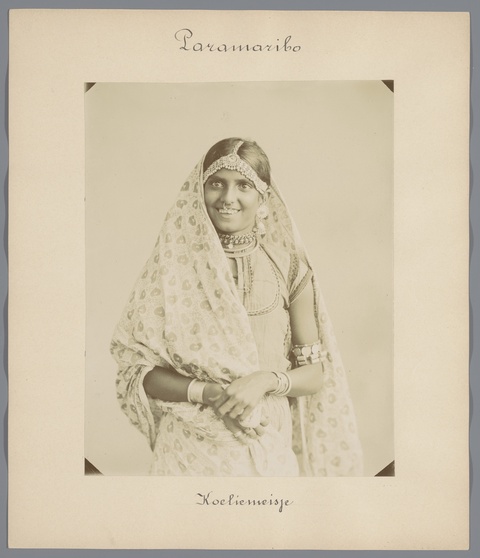Women Artists: Sovereignty, Kinship, and Care
By Reina Gattuso•May 2024•17 Minute Read
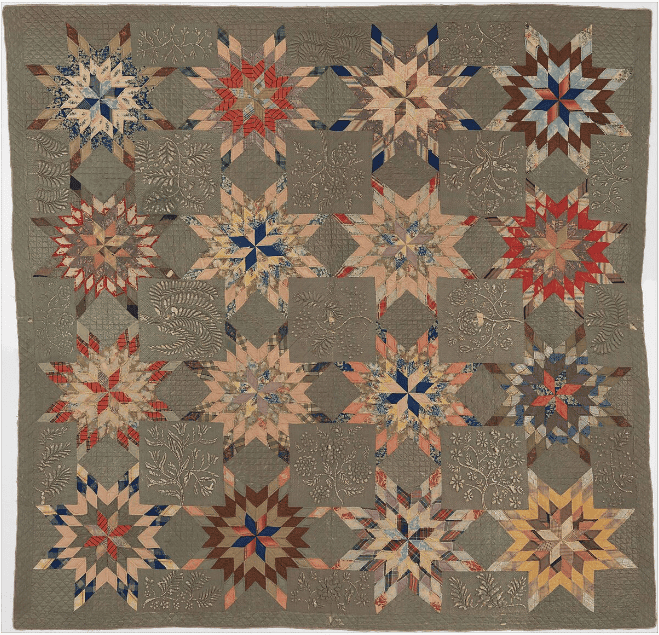
Ellen Morton Littlejohn and Margaret Morton Bibb, “Quilt, Star of Bethlehem pattern variation,” ca. 1837–50. Metropolitan Museum of Art. Public Domain.
Across time and place, women have created beautiful, useful, and ritually powerful objects that reinforce networks of kinship and care. In some societies, women hold customary rights to specific motifs, techniques, or compositions. Artistic transmission can ensure continued spiritual and political power, including under conditions of enslavement, genocide, and displacement.
Introduction
In many societies, such as parts of Native North America and Aboriginal Australia, women hold customary rights to specific artistic motifs or techniques.1 These aesthetic elements often reflect relationships with human kin, spiritual beings, and non-human relatives.2 In these cultures, passing down creative practices can help ensure continued religious and political power.3
This is especially true in the face of persecution. Under conditions of colonization, enslavement, and genocide, women often play vital roles in maintaining community relationships and identity.4 They have used artwork, domestic labor, stories, and songs to fight forced assimilation and cultivate joy.5
This feature focuses on the creative work of Haudenosaunee, Black American, and indentured Indo-Caribbean women and their descendents. Contemporary Black, Indigenous, and women of color scholarship describes how women help communities maintain enduring cultural sovereignty amid changing political and material conditions.6
Haudenosaunee Leaders: The Women’s Nomination Belt
The Haudenosaunee Confederacy, stewards of much of what is now the Northeastern United States and Canada, originally consisted of the Seneca, Cayuga, Onondaga, Oneida, and Mohawk. The Tuscarora joined later.7 These Indigenous nations are traditionally matrilineal, with women holding integral roles in ongoing practices of cultural and political sovereignty.8
Wampum belts, including the Women’s Nomation Belt, are an important expression of Haudenosaunee culture and power. Haudenosaunee artist Tonia Loran-Galban made a recreation of the Women’s Nomination Belt, which was included in the exhibition “Hearts of Our People: Native Women Artists” at the Minneapolis Institute of Art.
The Loran-Galban belt is contemporary. It has a clear provenance and community consent for its exhibition. In contrast, many wampum belts held in North American and European museums, including some of Curationist’s partner collections, do not have publicly available provenance information documenting their full journey from creator to museum. This is because many colonial institutions historically stole and misappropriated wampum.9
Haudenosaunee people make wampum from purple quahog and white whelk shells. Wampum is a form of symbolic representation and a mnemonic device, as explained by the Ganondagan National Historic Landmark, a Seneca cultural center. The colors of the shells, and the patterns they are arranged in, encode Haudenosaunee laws, treaties, messages, and history.10
The Haudenosaunee Confederacy governing structure consists of male councilors nominated from each clan of each nation. Elder women, called otiyaner or clan mothers, nominate the male councilors or chiefs, and authorize or withhold approval for wars.11 Male councilors and clan mothers also pass down wampum belts certifying their office.12 According to curator Jolene Rickard, the Women’s Nomination Belt authorizes the clan mothers to select male leaders, and evokes the founding of the Haudenosaunee government.13
In their written records, Christian colonial missionaries commented with shock and disapproval on the power and authority of Haudenosaunee women. They attempted to impose patriarchal, nuclear family structures onto Haudenosaunee people.14
European knowledge systems privilege phonetic scripts like English over other forms of representation. Thus, Euro-Americans dismissed wampum as a symbolic system.15 At the same time, Haudenosaunee and colonial powers marked their treaties with wampum, such as the Two Row wampum belt. When Mohawk leader Tee Yee Neen Ho Ga Row, also called Hendrick Tejonihokarawa, visited the British court as part of a political delegation, Dutch artist John Verelst painted his portrait for Queen Anne. He stands in a pose of authority, holding up a wampum belt that represents the British-Mohawk alliance.16
Colonial powers dishonored many treaties with the Haudenosaunee. Later, as part of their genocidal policies, the U.S. government and New York State stole and even criminalized wampum. These were attempts “to disrupt and control Native stories and understandings of self,” writes scholar Penelope Myrtle Kelsey.17 Haudenosaunee people waged successful campaigns to rematriate hundreds of stolen wampum belts from U.S. museums and historical societies in the latter half of the 20th century.18 Today, scholars write about the continuity and revitalization of wampum as an expression of Haudenosaunee cultural sovereignty and women’s power.19
African American Quilters: Ellen Morton Littlejohn, Margaret Morton Bibb, and the Freedom Quilting Bee
In what is now the United States, quiltmaking was largely a working women’s art. In post-colonization North American society, women disproportionately performed domestic labor. Thus, their art forms, like quiltmaking, often included the use and reuse of household materials like fabric scraps. Beginning around the 1970s, feminist art historians reclaimed quiltmaking as an object of study.20
Quilt patterns, whether abstract or figurative, can hold symbolic and narrative meaning. Scholars such as folklorist Gladys-Marie Fry argue that elements of Black American quiltmakers’ use of color and pattern can be traced back to West African textile practices, such as Fon banners with applique from the Kingdom of Dahomey.21 Within the United States, quilters drew on a variety of influences to develop distinctive regional aesthetics.
Many quiltmakers’ authorship went unrecorded. Contemporary art historians can use material, stylistic, and provenance clues to make an educated guess as to these creators’ identities, according to Leslie Umberger, curator of folk and self-taught art at the Smithsonian American Art Museum (SAAM). For example, there is no record of exactly who made the two quilts included here, which are currently held at SAAM. According to Umberger, context clues suggest their creators may have been Black American women working around the 1940s.
While women across social and racial groups have made quilts, there is a particularly important practice of quiltmaking among Black American women. Scholars writing in the Black feminist tradition have framed Black women’s quiltmaking as a form of self-expression, economic autonomy, and intergenerational connection.22 In her essay “In Search of Our Mothers’ Gardens,” Alice Walker describes an anonymous Black woman quiltmaker as “an artist who left her mark in the only materials she could afford, and in the only medium her position in society allowed her to use.”23 Meanwhile, scholar Alana Butler identifies quilting as part of a Black feminist ethic of care that “values motherhood and womanhood, values women’s stories, and values the shared bonds of sisterhood that have emerged through a history of collective struggle and resilience.”24
In the pre-Civil War United States, enslavers often forced women they enslaved to make quilts. Many quilts sewn by enslaved girls and women exist today in museum collections. Sisters Ellen Morton Littlejohn and Margaret Morton Bibb may have been children when the white Morton family forced them to create the above quilt, made of silk-and-cotton in an elaborate “Star of Bethlehem” pattern. The Morton family eventually gave the quilt to the Met.25
Enslaved women also quilted in order to meet their own and their loved one’s daily needs, sometimes selling their quilts to access income.26 For quilt historian Gladys-Marie Fry, researching enslaved women’s quilts “invoked the spirits of … forgotten women”—including her own enslaved ancestor Amanda, a skilled quilter.27
After Emancipation, African American women made quilts for their own use and for sale. Harriet Powers’s famous Bible Quilt is an example celebrated for its intricacy and originality. Born enslaved in Georgia in 1837, Powers made the Bible Quilt after Emancipation, between 1885 and 1886. It includes biblical scenes from the Book of Genesis and the life of Christ in a style that Fry connects to Dahomean applique work.28 Powers reluctantly sold the quilt out of economic need in 1890.29
Nearly a century later, in the 1960s, the Black women quilters of Gee’s Bend, Alabama, formed the Freedom Quilting Bee, a cooperative that provided the local community with a means of economic empowerment and political expression.30 The women of Gee’s Bend have passed their knowledge down in their community, and many women continue to quilt in Gee’s Bend today.31 Meanwhile, Black women artists working explicitly in contemporary art traditions, such as Faith Ringgold, have used quilting as a form of storytelling and political critique.
Reimagining Archives of Indo-Caribbean Indenturement
Upon the abolition of slavery throughout the British Empire in 1834, officials began intensively recruiting workers from colonial India. From the 1830s to 1917, approximately 500,000 people, a majority of them men, boarded ships to European Caribbean colonies.32 They worked on sugarcane plantations under five- to ten-year contracts of indenturement. Recruiters and plantation owners exploited indentured people through harsh working conditions, including sexual violence.33
Some of the only surviving visual records of individual indentured women are European colonial photographs sold to tourists. Dutch photographers in Suriname called the women “coolie belles,” using a slur for Asian workers.34 The Rijksmuseum, a Curationist partner collection, holds many of these postcards, three of which are pictured here.
A number of contemporary women artists of Indo-Caribbean-descent remix these photographs, as well as personal archival materials like textiles, to reimagine their ancestors’ experiences.35 Renluka Maharaj collages fabric, paint, and ink over colonial photographs of indentured women.36 Also drawing on women’s textile practices, artist Suchitra Mattai uses found objects, often vintage sarees, to create mixed media installations that evoke indentured women’s daily lives.37
Artist Maya Mackrandilal’s video installation and photo series Kal/Pani focuses on the experience of crossing the kaala paani, or “black water” of the ocean.38 Many caste Hindus believed that ocean crossings ruptured their ritual and familial ties.39
More recent scholarship has also emphasized the crossing of kaala paani as an act of social and economic self-fashioning. When they crossed the kaala paani, workers whose last names may have previously encoded their caste subordination often took new names as aspirational status markers, including Maharaj, Mahabir, and Sher: great king, great warrior, and lion.40 Indeed, people from oppressed caste backgrounds, and single women across caste, were more likely to choose to remain in the Caribbean than their dominant caste and married counterparts.41 As a result, as many as two-thirds of indentured workers remained in the Caribbean after their contracts ended.42 Contemporary Indo-Caribbean and diasporic women artists convey this dual sense of trauma and transformation in their work.
Conclusion
This feature is part of Curationist’s seven-part series on women artists in our partner archives. For a guide to the series, see the Introduction.
Reina Gattuso is a content writer on the Curationist team, and an independent journalist covering gender and sexuality, arts and culture, and food. Her journalism connects analysis of structural inequality to everyday stories of community, creativity, and care. Her work has appeared at Atlas Obscura, The Washington Post, Teen Vogue, The Lily, POPSUGAR, and more. Reina has an MA in Arts and Aesthetics (cinema, performance, and visual studies) from Jawaharlal Nehru University in New Delhi, India, where her research focused on sexuality in Hindi film. She writes and teaches writing to high school students in New York City.
Suggested Readings
Reading the Wampum: Essays on Hodinöhsö:ni’ Visual Code and Epistemological Recovery. Syracuse University Press, 2014. https://www.google.com/books/edition/Reading_the_Wampum/y-fqBQAAQBAJ?hl=en&gbpv=0
Walker, Alice. “In Search of Our Mothers’ Gardens.” In Within the Circle: An Anthology of African American Literary Criticism from the Harlem Renaissance to the Present, Angelyn Mitchell, ed. Duke University Press, 1994. http://l-adam-mekler.com/walker_in_search.pdf
Fry, Gladys-Marie. Stitched from the Soul: Slave Quilts from the Antebellum South. University of North Carolina Press, 2002. https://archive.org/details/stitchedfromsoul00fryg/page/10/mode/2up
Misrahi Barak, Judith. “Indentureship, Caste and the Crossing of the Kala Pani.” Studies in the Humanities and Social Sciences, vol. 14, no. 2, 2017. https://hal.science/hal-03067915/document
Dow, Lucy. “Indentured Indian Workers and Anti-Colonial Resistance in the British Empire.” The Gale Review, 25 May 2021. https://review.gale.com/2021/05/25/indentured-workers-and-anti-colonial-resistance-in-the-british-empire/
Citations
For “customary rights” as a cultural heritage framework, see: RaoRane, Meghana. “Aiming Straight: The Use of Indigenous Customary Law to Protect Traditional Cultural Expressions.” Pacific Rim Law & Policy Journal, vol. 15, no. 3, 2006, https://digitalcommons.law.uw.edu/wilj/vol15/iss3/8. Accessed 5 February 2024. See also: Swiderska, Krystyna. “Protecting Traditional Knowledge: A framework based on Customary Laws and Bio-Cultural Heritage.” International Institute for Environment and Development, https://www.iied.org/sites/default/files/pdfs/migrate/G01069.pdf. Accessed 5 February 2024.
The women of the Bawaka Collective in modern Australia, who call themselves “an Indigenous and non-Indigenous, more-than-human” research collective, explain their conception of nonhuman kin through the word “country”: “Country is rich and intensely meaningful. Country includes people, and it is also more-than-human as it includes winds, currents, animals, rocks, laws, custom, movement, song, knowledges, relationships, histories, presents, and futures. Country is alive, sentient and communicative, it encompasses tangible and intangible forces that connect, shape, create, mutually care and become together in, with and as place.” Bawaka Collective. Intercultural Communication Handbook, p. 8, http://bawakacollective.com/wp-content/uploads/2018/12/IC_Handbook_high.pdf. Accessed 1 June 2023.
See, for example, Yolŋu women’s songspirals as presented by the Bawaka Collective, which some women have customary rights to share, and Warli women’s art: Bawaka Collective, https://bawakacollective.com/book-extract/. Accessed 31 May 2023; Minj, Nolina. “The Women Who are Reclaiming Warli Art.” Scroll, 15 June 2022, https://scroll.in/article/1026111/the-women-who-are-reclaiming-warli-art. Accessed 5 June 2023.
See, for example, how Indigenous Canadian girls and young women learning craft practices from elders increases intergenerational cohesion and helps heal trauma caused by colonization: Sydora, Beate C., et al. “Traditional crafting as a catalyst for Indigenous women’s intergenerational cohesion and wellness: a Canadian perspective.” International Journal of Circumpolar Health, vol. 82, no. 1, 2023. NIH, doi:10.1080/22423982.2023.2175763. Accessed 2 February 2024.
Enslaved people, including women, used popular songs to transmit messages strategizing escape to freedom. (See: “Songs of Slave Resistance.” CSUN University Library, 23 February 2016, https://library.csun.edu/SCA/Peek-in-the-Stacks/slave-resistance. Accessed 1 June 2023.) Examples abound from beyond the Americas, as well. For example, folk songs and performance have played a significant role in peasant rebellions and women’s critiques of patriarchy in South Asia. (See: Kundu, Rama. “Folk Forms as Protest.” IGNOU Egyan Kosh, 2017, https://www.egyankosh.ac.in/bitstream/123456789/38856/1/Unit-4.pdf. Accessed 31 May 2023.)
Archaeologists Marianne Sallum and Francisco Silva Noelli, writing about Tupiniquim potters in what is now Brazil, challenge the dominant framework of Indigenous “cultural loss” and instead center “cultural persistence,” emphasizing Indigenous women’s “inventiveness, protagonism, and persistence against and also within colonialism.” (Sallum, Marianne and Francisco Silva Noelli. “An Archaeology of Colonialism and the Persistence of Women Potters’ Practices in Brazil: From Tupiniquim to Paulistaware.” International Journal of Historical Archaeology, vol. 24, no. 3, January 2020, https://repositorio.ul.pt/bitstream/10451/44318/1/Sallum%20Noelli%20IJHA%202020.pdf. Accessed 1 June 2023.
“The League of Nations.” Haudenosaunee Confederacy, https://www.haudenosauneeconfederacy.com/the-league-of-nations/. Accessed 29 April 2024.
Horn-Miller, Kahente. “Otiyaner: The ‘Women’s Path’ Through Colonialism.” Atlantis: Critical Studies in Gender, Culture, and Social Justice, vol. 29 no. 2, 2005, https://journals.msvu.ca/index.php/atlantis/article/view/1050. Accessed 30 June 2023.
Kelsey, Penelope Myrtle. Reading the Wampum: Essays on Hodinöhsö:ni’ Visual Code and Epistemological Recovery. Syracuse University Press, 2014, p. xvii. Google Books, https://www.google.com/books/edition/Reading_the_Wampum/y-fqBQAAQBAJ?hl=en&gbpv=0. Accessed 30 June 2023.
“Wampum.” Ganondagan, https://www.ganondagan.org/wampum. Accessed 29 April 2024.
Horn-Miller, p. 59.
“What is Wampum?” Ganondagan, https://ganondagan.org/Learning/Wampum. Accessed 30 June 2023.
“Iakonikohnrio Tonia Loran-Galban.” Philbrook Museum Mobile Guide, https://philbrook.stqry.app/en/story/162499. Accessed 30 June 2023. For the founding story, see: Mann, Barbara Alice and Johansen, Bruce Elliott. Encyclopedia of the Haudenosaunee, Greenwood Press, 2000, https://www.academia.edu/66736098/Encyclopedia_of_the_Haudenosaunee_Iroquois_Confederacy_. Accessed 30 June 2023. See also: “Kayanlaˀ Kówa – Great Law of Peace.” Oneida Nation, https://oneida-nsn.gov/our-ways/our-story/great-law-of-peace/. Accessed 30 June 2023.
Horn-Miller, pp. 60-61.
Doxtator, Deborah. “Inclusive and Exclusive Perceptions of Difference: Native and Euro-Based Concepts of Time, History, and Change.” Decentering the Renaissance. University of Toronto Press, 2001, p. 41. Google Books, https://www.google.com/books/edition/Decentring_the_Renaissance/cwC9EbJrp7gC?hl=en&gbpv=0. Accessed 30 June 2023.
“Race in America.” National Gallery of Art, https://www.nga.gov/features/slideshows/race-america.html#slide_1. Accessed 5 February 2024. See also: Pratt, Stephanie. “Reynolds’ ‘King of the Cherokees’ and Other Mistaken Identities in the Portraiture of Native American Delegations, 1710-1762.” Oxford Art Journal, vol. 21, no. 2, 1998. JSTOR, https://www.jstor.org/stable/1360618?seq=3. Accessed 5 February 2024.
Kelsey, p. xvii.
Kelsey.
Kelsey.
For feminist art historians and the redefinition of “art” and “craft,” see the introduction to this series. For an example of second-wave feminist scholarship on quiltmaking, see: Hedges, Elaine. “Quilts and Women’s Culture.” In Elaine Hedges and Ingrid Wendt, eds. In Her Own Image, The Feminist Press, 1980. Google Books, https://www.google.com/books/edition/In_Her_Own_Image_Women_Working_in_the_Ar/N2YJqJF2YboC?hl=en&gbpv=1.
Fry, Gladys-Marie. Stitched from the Soul: Slave Quilts from the Antebellum South. University of North Carolina Press, 2002, p. 12. Internet Archive, https://archive.org/details/stitchedfromsoul00fryg/page/10/mode/2up.
Barnett Cash, Floris. “Kinship and Quilting: An Examination of an African-American Tradition.” The Journal of Negro History, vol. 80, no. 1, 1995, https://latinamericanstudies.org/slavery/JNH-1995.pdf. Accessed 1 July 2023.
Walker, Alice. “In Search of Our Mothers’ Gardens.” In Angelyn Mitchell, ed. Within the Circle: An Anthology of African American Literary Criticism from the Harlem Renaissance to the Present. Duke University Press, 1994, http://l-adam-mekler.com/walker_in_search.pdf.
Butler, Alana. “Quiltmaking Among African-American Women as a Pedagogy of Care, Empowerment, and Sisterhood.” Gender and Education, vol. 32, no. 5, 2019. Taylor and Francis, https://www.tandfonline.com/doi/abs/10.1080/09540253.2019.1594708. Accessed 31 May 2023.
“Quilt, Star of Bethlehem Pattern.” The Met, https://www.metmuseum.org/art/collection/search/13884. Accessed 29 April 2024.
Fry, p. 16. Historian Stephanie M. Camp also documents the care and pleasure some enslaved women took in sewing themselves beautiful outfits for dances and holidays: Camp, Stephanie M. “The Pleasures of Resistance: Enslaved Women and Body Politics in the Plantation South, 1830-1861.” The Journal of Southern History, vol. 68, no. 2, August 2022.
Fry, p. vii.
Fry, p. 12.
“1885 - 1886 Harriet Powers's Bible Quilt.” National Museum of American History, https://americanhistory.si.edu/collections/search/object/nmah_556462. Accessed 1 July 2023.
“Gee’s Bend.” Souls Grown Deep, https://www.soulsgrowndeep.org/gees-bend-quiltmakers. Accessed 1 July 2023.
Gee’s Bend Quilting Retreats, https://www.geesbendquiltingretreats.com/. Accessed 1 July 2023.
Roopnarine, Lomarsh. “Indian Indentured Servitude in the Atlantic World.” Oxford Bibliographies, https://www.oxfordbibliographies.com/display/document/obo-9780199730414/obo-9780199730414-0210.xml. Accessed 29 April 2024.
Dow, Lucy. “Indentured Indian Workers and Anti-Colonial Resistance in the British Empire.” The Gale Review, 25 May 2021, https://review.gale.com/2021/05/25/indentured-workers-and-anti-colonial-resistance-in-the-british-empire/. Accessed 10 July 2023. For gender relations and gendered violence, see: Davis-Bramble, Makiya. “What of the Indian Women in Indentured Labor?” Museum of London Docklands. https://www.museumoflondon.org.uk/discover/indian-women-indentured-labour-caribbean-history-docklands. Accessed 29 April 2024.
Sharma, Hena. “Why Indian Women Became The Faces of These Victorian-Era Postcards.” CNN Style, 23 December 2020, https://www.cnn.com/style/article/indo-caribbean-women-colonial-postcards/index.html. Accessed 10 July 2023.
We have included images of the archival works rather than the contemporary reclamations in this article, as the contemporary works are under copyright. A number of archival projects seek to read women’s and queer histories in the silences of the archive. See, for example: Ro(u)ted by our Stories Collective, “Stories the Mangroves Hold: Reflections on Indo-Caribbean Feminist Community Archiving.” Journal of Indentureship and its Legacies, vol. 1, no. 1, 1 September 2021, Science Open, https://www.scienceopen.com/hosted-document?doi=10.13169/jofstudindentleg.1.1.0063. Accessed 10 July 2023; Persard, Suzanne, “queer x indenture, a series by suzanne persard.” queer x indenture, https://www.queerxindenture.com/. Accessed 10 July 2023; Wahab, Amar. “Introduction: Queering Indentureship.” Journal for the Study of Indentureship and its Legacies, vol. 2, no. 1, 8 July 2022, https://www.scienceopen.com/hosted-document?doi=10.13169/jofstudindentleg.2.1.0001. Accessed 10 July 2023; Wahab. “Trans-Ocean Erotics: Sexing Indentureship.” Journal for the Study of Indentureship and its Legacies, vol. 2, no. 1, https://www.scienceopen.com/hosted-document?doi=10.13169/jofstudindentleg.2.2.0149. Accessed 10 July 2023; Persadie, Ryan. “Tanty Feminisms: The Aesthetics of Auntyhood, #Coolieween and the Erotics of Post-Indenture.” Journal for the Study of Indentureship and its Legacies, vol. 2, no. 1, 8 July 2022, https://www.scienceopen.com/hosted-document?doi=10.13169/jofstudindentleg.2.1.0059. Accessed 10 July 2023.
Padder, Sadaf. “A Tale of Two Countries: Finding Indo-Caribbean Shakti in Colorado.” Hyperallergic, 25 January 2022, https://hyperallergic.com/705864/a-tale-of-two-countries-finding-indo-caribbean-shakti-in-colorado/. Accessed 10 July 2023.
For an analysis of Mattai’s work specifically, see: Magnatta, Sarah. “Suchitra Mattai, Exodus.” Smarthistory, https://smarthistory.org/suchitra-mattai-exodus/. Accessed 10 July 2023. See also: Seegobin, Anjali. “Culture Series Part 3: Remembering Indentureship Through Art in Suriname, Guyana, and Trinidad.” browngirl, 2 January 2023, https://browngirlmagazine.com/culture-series-part-3-remembering-indentureship-through-art-in-suriname-guyana-and-trinidad/. Accessed 10 July 2023.
Aneiza Ali, Grace. “Artistic Responses to Crossing the Kālā Pānį.” Arts, vol. 12, no. 1, 13 February 2023, https://www.mdpi.com/2076-0752/12/1/30. Accessed 10 July 2023.
Bates, Crispin and Carter, Marina. “Kala Pani Revisited: Indian Labour Migrants and the Sea Crossing.” Journal of Indentureship and Its Legacies, vol. 1, no. 1, September 2021. Science Direct. https://www.scienceopen.com/hosted-document?doi=10.13169/jofstudindentleg.1.1.0036. Accessed 24 April 2024.
Misrahi Barak, Judith. “Indentureship, Caste and the Crossing of the Kala Pani.” Studies in the Humanities and Social Sciences, vol. 14, no. 2, 2017. HAL, https://hal.science/hal-03067915/document. Accessed 10 July 2023.
Hui, Neha. “Between Unfreedoms: How Caste Was a Major Determining Factor in Deciding Return Migration of Indentured Workers.” University of Reading, https://research.reading.ac.uk/research-blog/caste-return-migration-and-indentured-workers/. Accessed 9 April 2024.
Roopnarine.
Reina Gattuso is a content writer on the Curationist team, and an independent journalist covering gender and sexuality, arts and culture, and food. Her journalism connects analysis of structural inequality to everyday stories of community, creativity, and care. Her work has appeared at Atlas Obscura, The Washington Post, Teen Vogue, The Lily, POPSUGAR, and more. Reina has an MA in Arts and Aesthetics (cinema, performance, and visual studies) from Jawaharlal Nehru University in New Delhi, India, where her research focused on sexuality in Hindi film. She writes and teaches writing to high school students in New York City.

